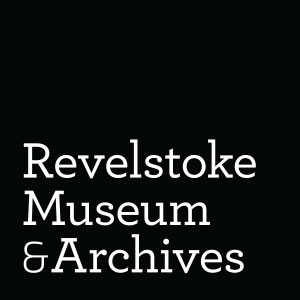International Museums Day 2021
International Museums Day 2021
May 18 is International Museums Day. It is a good time to reflect on our journey at Revelstoke Museum and Archives.
When the Revelstoke and District Historical Association was formed in 1958, it was with the belief that Revelstoke had history worth preserving, and that, although Revelstoke as a settled community was only 73 years old, much of the past had already been forgotten. Within a couple of years, the association starting actively collecting artifacts, and by 1962, they had moved into the basement of the former Health Unit building on Mackenzie Avenue. The first curator Mary Daem said that they ran out of space as soon as they moved in. It wasn’t until 1974 that the museum was moved into the building where we still are today. The former post office, built in 1926, had been bought by the City of Revelstoke specifically to house the museum.
Carpenters got to work and built wooden shelves, with nylon netting nailed over the front of the cases to prevent theft. Unfortunately, a knife could cut through the netting very easily, and a few valuable artifacts were lost that way. The original layout of the post office wasn’t changed, so the traffic flow was awkward. The office was in the back of the building, where the parlour display is now, so there was no one to greet visitors when they walked in the front door.
The building was originally shared with the Revelstoke Art Group, who used the second floor for their art shows and classes. They moved out in 1999, to allow the museum to expand the archives and exhibit areas to the second floor.
When I started working at the museum in 1983, the museum was only open in the summer months. After a few years, we were able to open year-round. This enabled us to access grant funding to work in the archives, and to make the records more accessible.
Thanks to the efforts of Mary Daem, Gertie Leslie, Ruby Nobbs, and others, the collection was properly documented, but there was no system for quickly retrieving artifacts in storage, or for knowing what was on display at any given time. When people came in looking for specific artifacts, my heart sank, knowing that it would take a lot of time to find the artifact, if I could find it at all. The paper records were well kept, but it was time consuming to go through them to find specific items.
Cathy English and Ruby Nobbs in the parlor display, currently the location of the front office, circa 1985.
We created a Microsoft Access database around 1999, and began transferring the paper records into the system. Eventually, the museum purchased a Collections Management software program known as Past Perfect. This system is used by many museums, and makes it easy to manage all of the data for our artifact, photograph, archives, and library collections. We had grant funding to install rolling shelving in the downstairs storage areas several years ago, and all of the artifacts are properly housed, with location codes for quick retrieval.
Changes to the exhibit areas happened in 2004 and again in 2013, resulting in a bright and open display area, and the relocation of the office and gift shop at the front of the building. The early exhibit style could best be described as visible storage, with lots of artifacts on shelves with little interpretation. We have moved to more of a thematic and story-telling model, using the artifacts, photographs, and text to tell the stories of the community. We have worked with several talented graphic designers to create attractive and compelling exhibits.
We have also started telling forgotten and untold stories, especially around the Indigenous history of this region. When I first started working at the museum, the standard narrative was that Indigenous people may have come here occasionally for hunting and gathering, but they never lived here, because they didn’t like the snow or the mountains. We now know that this was untrue, and we are trying to redress this past wrong. The Sinixt exhibit tells some of the story of the nation that had permanent villages in this region, and we are now trying to frame other local stories within the larger picture of colonialism and the displacement of the Indigenous population.
In 2015, the museum launched Land of Thundering Snow as both an online exhibit (find it at www.landofthunderingsnow.ca) and a physical exhibit in the museum. The dual exhibit won an award from the Canadian Museums Association in 2016. This past year, with funding from the Government of Canada, we were able to create a travelling version of Land of Thundering Snow. It debuted in Whistler this past winter, and will be travelling to other museums throughout Canada over the next several years.
Our Heritage Garden was created in 2004, turning an unattractive alley into a beautiful downtown greenspace. It is lovingly maintained by a crew of volunteers, and is a great spot for a picnic lunch or outdoor meeting. The museum saw its first wedding this year, when my daughter and her new husband had a COVID compliant micro wedding in the garden.
There is always much to be done at the museum. We receive donations on a regular basis, and they all need to be catalogued. We make regular changes to the museum exhibits to keep things looking new and interesting. We answer hundreds of information requests every year, and we run programs, even though most of it is digital at the moment.
I am happy to have spent so many years here, immersing myself in the history of this community, and learning new ways to honour the stories of the people who came before us.
Happy International Museums Day!
Cathy English, Curator

